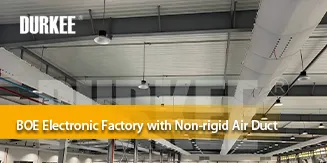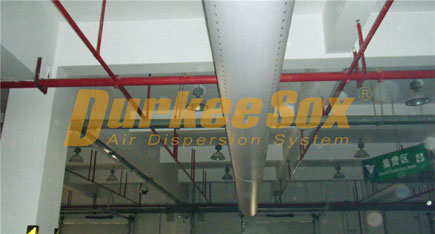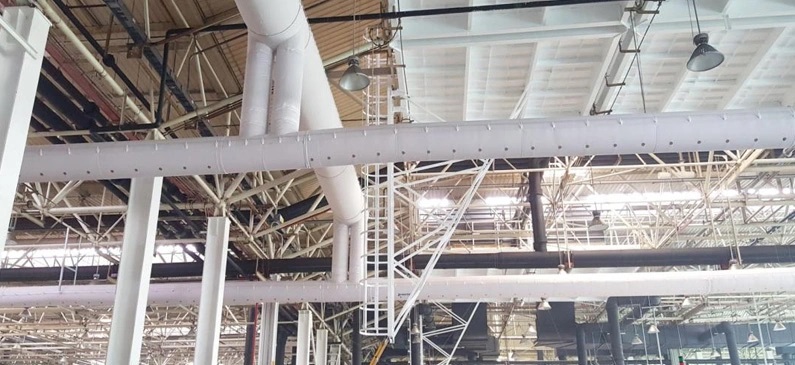 BOE Vietnam Factory: Non-rigid Air Duct Solutions for Electronic Industry
BOE Vietnam Factory: Non-rigid Air Duct Solutions for Electronic Industry
 Why Fabric Air Ducts Are the Preferred Choice for Ventilation in Large Spaces
Why Fabric Air Ducts Are the Preferred Choice for Ventilation in Large Spaces
 The Difference Between Non-Rigid Air Ducts and Rigid Ductwork
The Difference Between Non-Rigid Air Ducts and Rigid Ductwork
When considering the design of fiber fabric air duct systems, various factors that affect air conditioning and airflow organization within a space must be taken into account prior to installation.
The research on the specific engineering design requirements for air conditioning includes the calculation of the hot and cold load, air volume, terminal wind speed, and uniformity.
The study of the hot and cold load is based on the method and basis used by the designer for calculating hot and cold loads. It is important to understand the designer's design intent in order to determine the relationship between the fiber fabric air duct load, air supply method, airflow organization, and suspension height.
The study of air volume mainly involves understanding the relationship between the air supply height and the air volume per unit area, in order to ensure that the air supply volume within the entire room meets the requirements, giving the desired effect for different seasons.
The study of terminal wind speed mainly focuses on the different functional zones of each project, as each functional zone has different requirements regarding terminal wind speed.
We need to understand the intended use for the project and the actual needs of the end user in order to design different hole sizes and permeability for the fiber fabric air duct, ensuring the desired final result.
Similar to the study of terminal wind speed, the study of uniformity also requires a thorough understanding of the functional zones of the project, as well as its actual use requirements in order to design different layout plans.
The fabric air duct industry is facing a new round of market competition triggered by product innovation, in which energy-saving and eco-friendly low-carbon products will become the mainstream in the future market.
Low-carbon emission reduction is a national action, and it has become the responsibility and obligation of every enterprise. It not only represents a priority consideration in terms of economic benefits but also reflects the correct direction of production and living, which should be environmentally friendly and promote a beautiful and green home.
Due to the continuous increase in demand for low-carbon, eco-friendly and energy-efficient air conditioning systems for enterprises, as well as the continuous economic development, the future prospects for the development of the central air conditioning fabric air duct system are broad.
However, many factors contribute to the instability of the HVAC market. Nevertheless, the upstream and downstream industries of the HVAC industry will work together, and the industry will undoubtedly develop healthily and harmoniously as expected.
Cloth air duct companies need to actively respond to the national call for energy-saving and emission reduction and incorporate energy-saving into their product development, while also integrating it into the production process.
Reducing energy consumption will undoubtedly bring challenges to the HVAC industry, but the countless benefits it brings to society should be noted. At the same time, energy-saving will provide a new stage for the development of the HVAC industry chain.